Do you need some fresh pepperoncini, but the store you go to doesn’t seem to have any? Or maybe the pepperoncini that your recipe asks for are sold out at the grocery store, and you’re having trouble thinking of a good alternative ingredient to use in its place.
There are a lot of questions that need to be addressed, and fortunately for you, we have all of the answers!
On the shelves of the store, you may find anywhere from three to seven fantastic selections that are readily available. In point of fact, everyone gets pepperoncini confused very easily. Let’s recap.
1. Banana Peppers

Because of the striking similarity in flavor, banana peppers are often considered to be the greatest alternative to pepperoncini.
Both of these peppers fall into the same area on the Scoville scale due to their low levels of heat.
Because of how similar these two peppers are to one another, they are frequently given the wrong names at grocery stores.
Banana peppers have a taste that is sweet and tangy, and as they develop, that flavor becomes even more pronounced.
The yellow and round appearance of their bodies, which resemble bananas, is where the name comes from.
When you go to the grocery store, you will most likely discover banana peppers pickled and stored in jars.
You may use banana peppers for pepperoncini in any recipe, and the end result will be quite similar in flavor to the original dish.
These peppers are not particularly spicy and can be eaten raw, for example in a salad.
2. Cherry Peppers
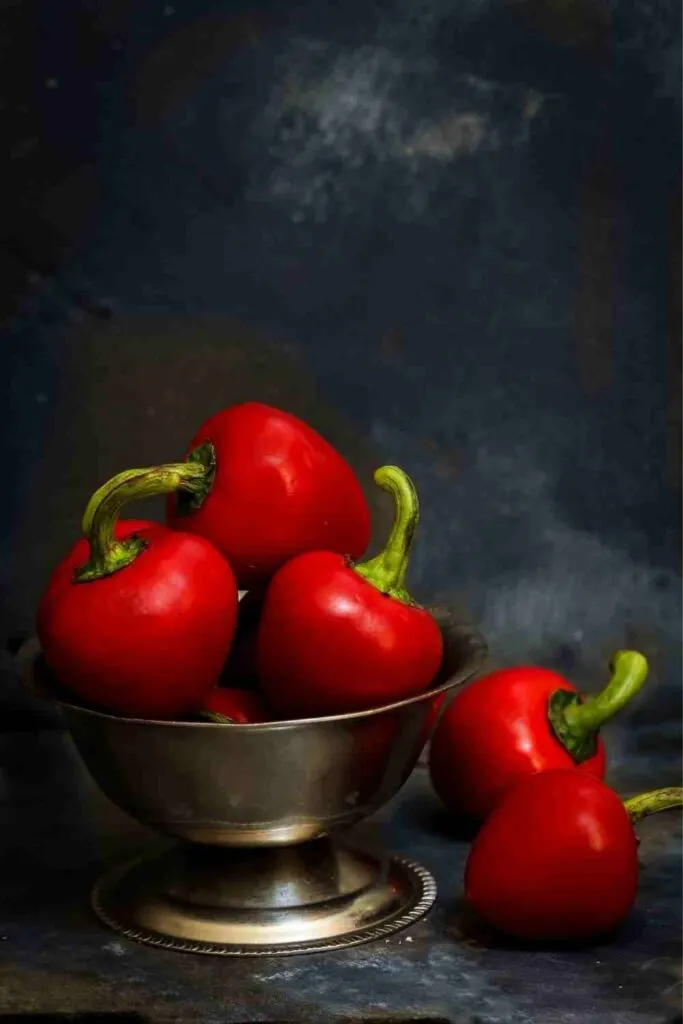
Those individuals who are accustomed to eating foods with a high level of heat will recognize these.
These spherical peppers are often served filled, or they are sometimes used to make olives that are then stuffed with other ingredients.
Homemade stuffed cherry peppers are simple to prepare, and the peppers may be crammed with cheese, chicken, or anything else of your choosing.
Cherry peppers are native to the tropical regions of Central and South America. Cherry peppers may be found in both countries.
Because of their spherical form and bright red color, they remind me of cherry tomatoes.
It is also possible to locate them under the name pimiento or pimento.
The amount of heat that may be found in cherry peppers is comparable to that found in pepperoncini.
As a result, they are an excellent replacement option for foods such as salads, spaghetti, and antipasto platters.
There are also a great number of one-of-a-kind dishes, such as stuffed cherry peppers, that you may test out.
3. Anaheim Peppers
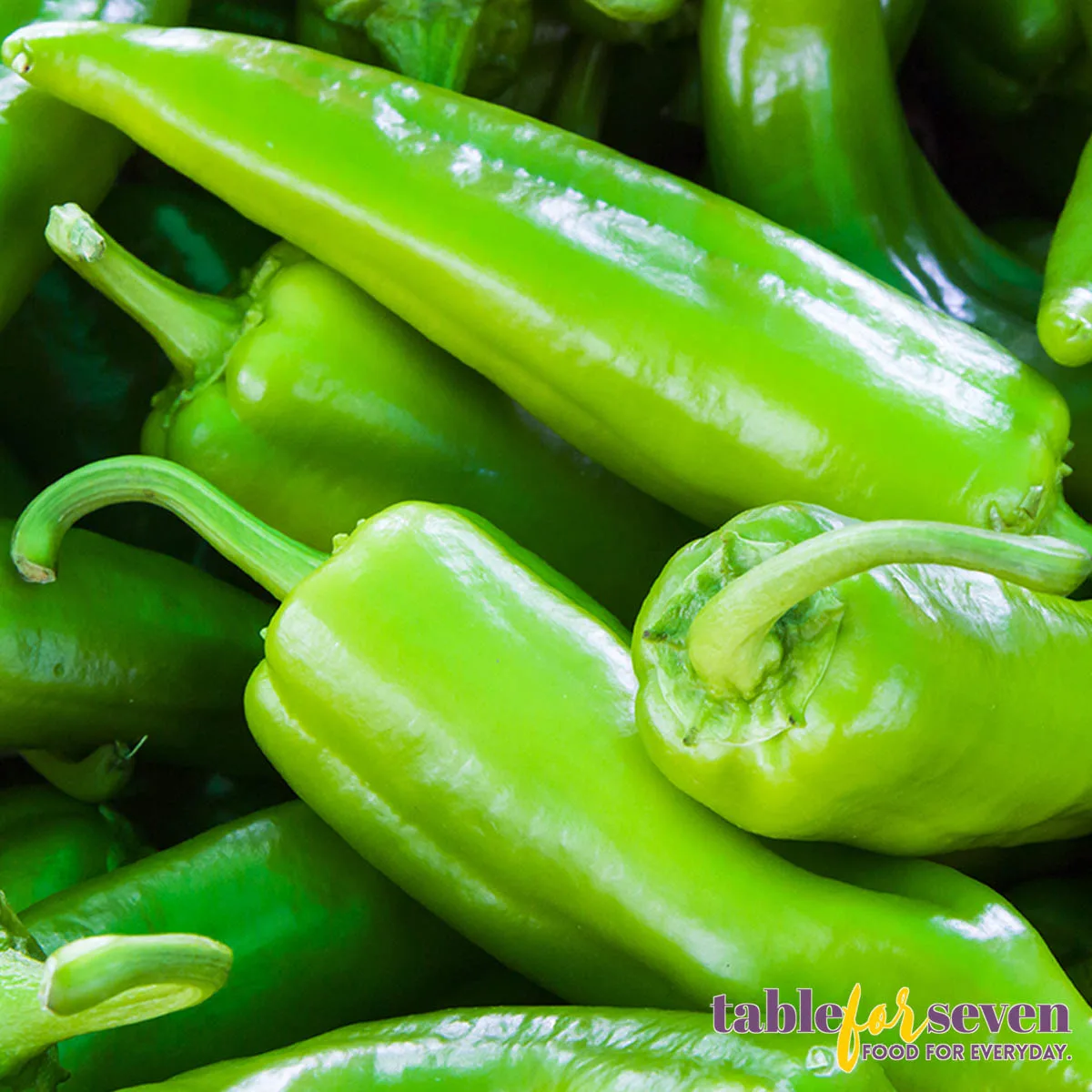
This type of pepper is fairly widespread and may be purchased in a wide variety of grocery stores.
The Anaheim pepper originates in the state of New Mexico in the United States and is a member of the New Mexico Chile cultivar group.
Hispanic cultures were the first to cultivate these peppers in the early 1600s.
A farmer by trade, Emilio Ortega transported seeds from New Mexico to the city of Anaheim in California.
The name “Anaheim pepper” was later given to his cultivar.
If you want things spicy, adding some Anaheim peppers to your meal will give it a little more of a kick than just using pepperoncini alone.
They have a wide range of applications; you may stuff them or use them in burgers or omelets, for example.
Because Anaheim has a flavor that is similar to that of pepperoncini, it is an acceptable replacement.
4. Poblano Peppers
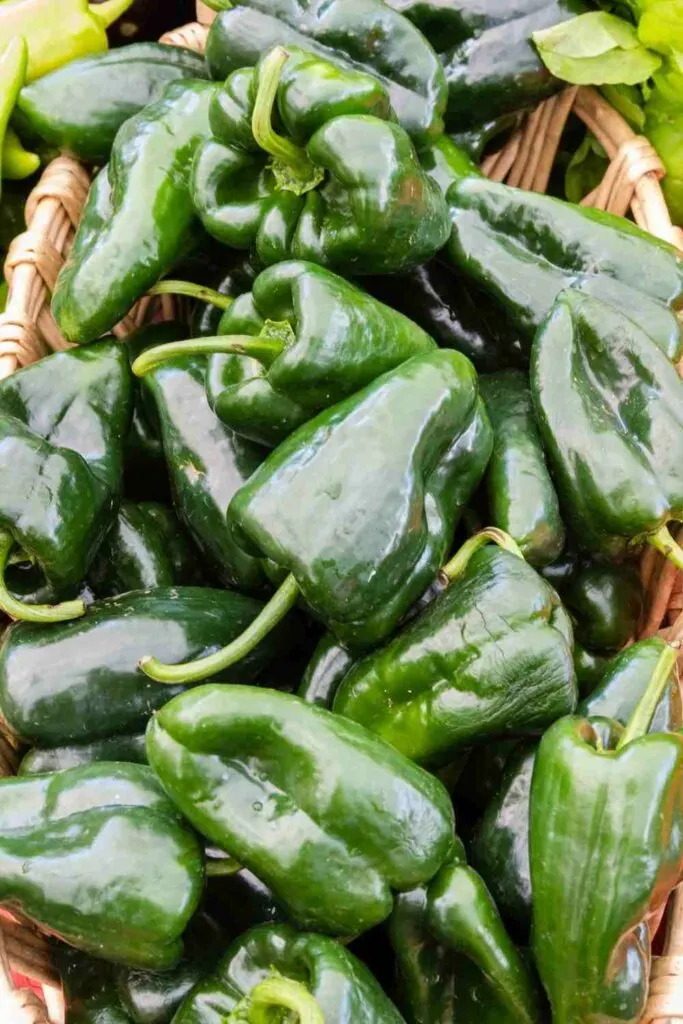
Poblano peppers have their roots in the Mexican state of Puebla, although nowadays they are farmed mostly in the state of California.
They have a beautiful green hue, and because they grow to be rather large, they are ideal for use in stuffing.
A poblano that has reached maturity will have a red or brown hue, and the name “ancho chile” refers to a poblano that has been dried.
The heat level of poblano peppers is about equivalent to that of pepperoncini peppers.
However, the vast majority of individuals will continue to regard them to be moderate.
The taste is where the poblano and pepperoncini diverge most significantly from one another.
While poblano peppers have an earthy taste, pepperoncini have a sweet flavor.
You should only incorporate poblano peppers in your meal if you are willing to sacrifice some of the dish’s natural sweetness when doing so.
5. Jalapeno Peppers
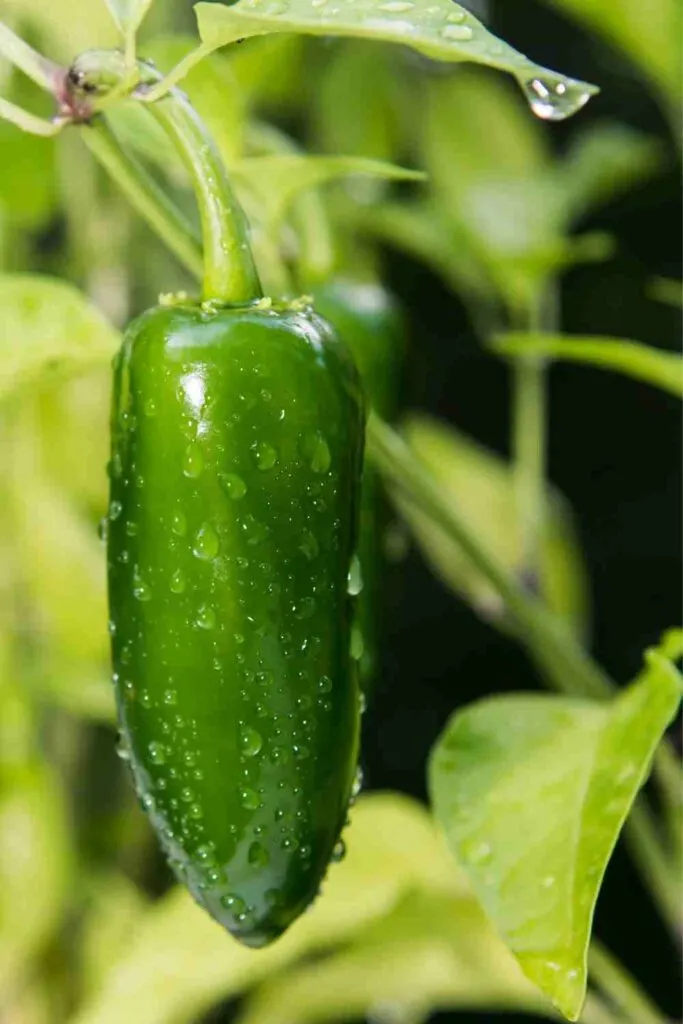
In the United States, this particular chili pepper has the most popularity, and that popularity is only growing.
Most peppers are produced in the states of California and New Mexico, with a combined harvest of more than 18,000 acres in 2015.
In most cases, jalapeno peppers are harvested and sold when they are still in their green state.
On this list, jalapenos have the highest level of heat, however, the level of heat might change depending on when they were harvested.
Jalapenos that have fully matured and become red are the spiciest variety.
Those who enjoy eating foods with a moderate to a high level of heat would most likely enjoy this pepper.
Be aware that the meal will have a significantly higher level of heat if you replace the pepperoncini with jalapenos rather than pepperoncini.
You may make up for this by using a little less amount of pepper.
6. Cubanelle
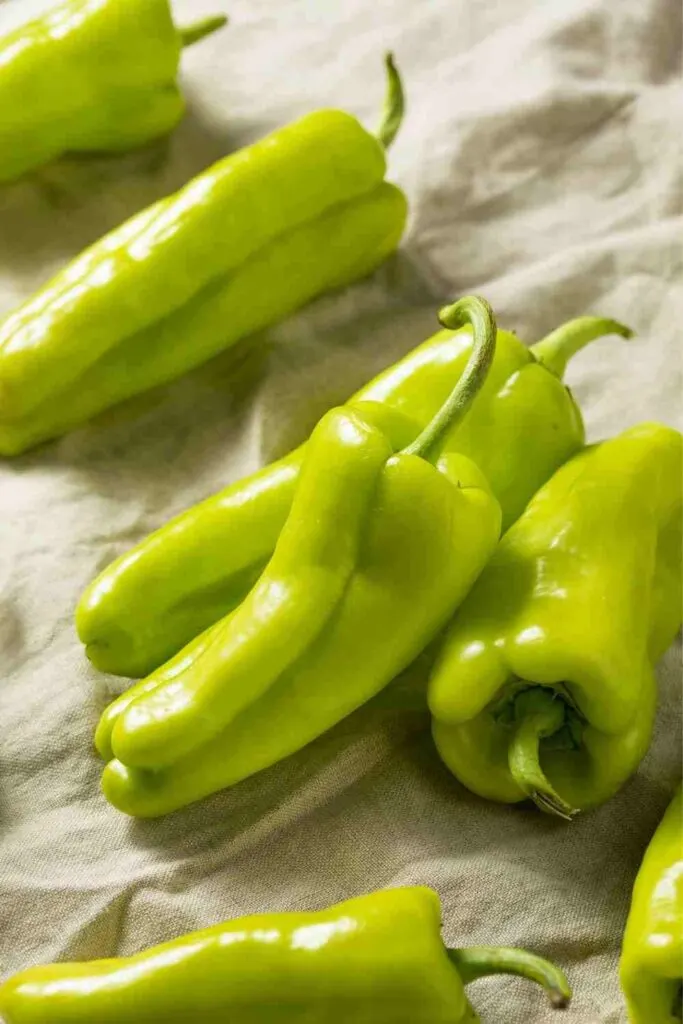
Cubanelles, also known as Cuban peppers, is another pepper variety that will eventually take the place of pepperoncini.
When Cubanelles have attained their maturity, their color goes through a progression from yellow to green to orange and then ultimately to red. This progression is quite similar to the one that is required for your recipe.
In point of fact, the pepper’s papery exterior, in addition to its mildly sweet flavor and moderately strong taste, is what has contributed most to its notoriety.
Moving on to the level of spiciness, the Cubanelle pepper has a Scoville heat unit range of 100 to 1000, making it approximately twice as spicy as the banana pepper.
If you decide to use Cubanelle as a substitute for the dish of the day that calls for banana peppers, then, whether you like it or not, reducing the quantity of it that you use is a requirement that you should carry out.
7. Hungarian Wax Pepper
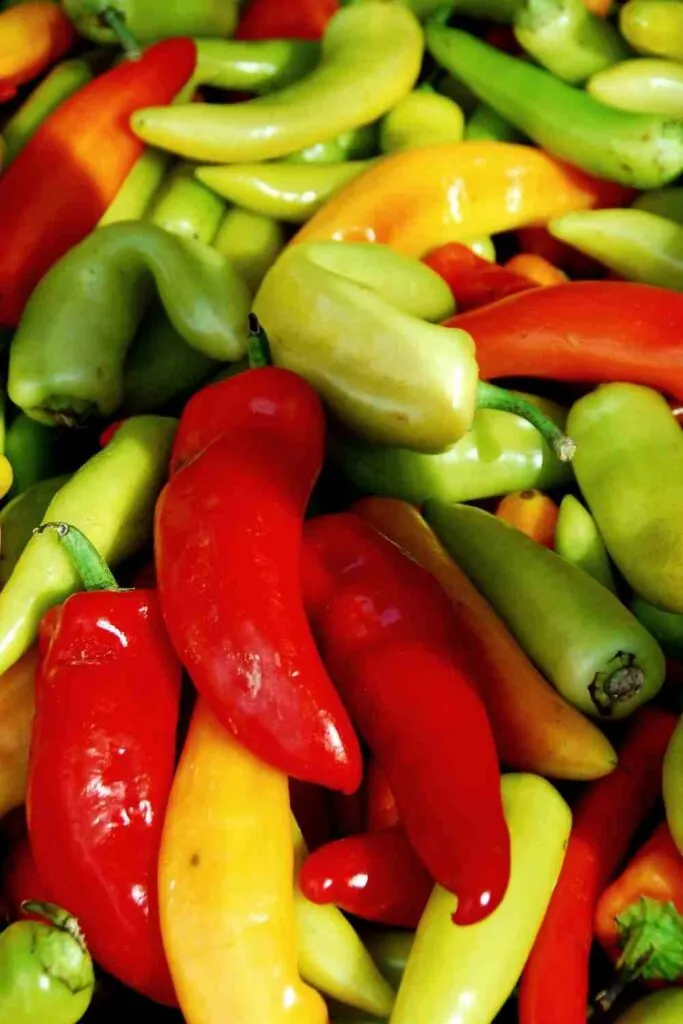
Imagine that pepperoncini and banana pepper are identical twins and that the Hungarian wax pepper is their younger brother who is clearly related to them.
The appearance of Hungarian wax peppers is quite similar to that of banana peppers, despite the fact that Hungarian wax peppers are somewhat larger than banana peppers. You could also get a flavor that is similar to that of banana peppers, which is kind of sour and sweet.
On the other hand, there is a fundamental distinction, and that is the fact that these seasonings are in no way mild or easy to taste slow.
The heat rating of Hungarian wax peppers ranges from 5,000 to 10,000 SHU, which places them on par with jalapeno peppers and in certain cases places them far further up the heat scale.
You are welcome to think of it as a substitute for banana peppers if that is what you want to do; however, before you do so, you should make sure that you are prepared to increase your spicy endurance on the Scoville scale banana pepper.
To your knowledge, wax peppers from Hungary are commonly accessible at grocery stores around the country. Both fresh chilies and spicy pickled pepper rings are easily accessible to both of you and may be found in a variety of places.
What Flavor Is Pepperoncini?
Pepperoncini has an awseome sweet flavor. Whether you are aware of it or not, the odds are good that you have consumed a good number of pepperoncini peppers throughout your life.
When it is fresh, this pepper has a flavor that is similar to that of sweet bell pepper, while having a heat level that ranges from 100 to 500 Scoville units, placing it just above bell peppers on the Scoville scale.
What Kind Of Pepper Is Pepperoncini?
Pepperoncini are a type of chili pepper that is also known as golden Greek peppers, Tuscan peppers, or sweet Italian peppers.
They are scientifically known as capsicum annuum, which is the spicy subset of the pepper family. Other names for pepperoncini include sweet Italian peppers, Tuscan peppers, or sweet Greek peppers.
They are barely two to three inches long and have thin skin that can range in hue from yellow to light green.
Can I Use Pickle Juice Instead Of Pepperoncini?
Yes, you can Use Pickle Juice Instead Of Pepperoncini, A pickleback is the name given to the shot of brine that is taken after consuming a shot of whiskey. Pickle juice is the more usual choice for this, although pepperoncini juice is a viable alternative that can achieve comparable results.
